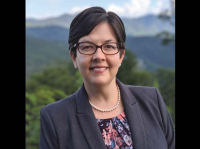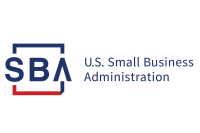Haywood program offers path out of addiction

The first thing anyone likely sees when they walk into Amanda Seay’s Haywood County Courthouse office is her quote of the month.
“Today is the day that you become the person that you were always meant to be,” it currently reads. “Leave the past. You have a chance to restart and just move forward.”
The quote perfectly sums up the ethos of the county’s new recovery court, currently operating on a pilot plan with six participants and five on the waiting list.
The pilot program was green-lighted by the General Assembly back in 2022, and it was determined that the state would give Haywood County $230,000 per year for two years to fund it. Back then, county commissioners unanimously supported the program, and it doesn’t appear that support has wavered.
Seay, the program coordinator, is a former probation officer who’s monitored everyone from juvenile offenders to high-risk individuals like gang members and sex offenders. In her current role, she has more of an opportunity to be active in the lives of people she works with — an opportunity she relishes.
Related Items
“When you’re a probation officer, you’re with these people maybe two times a month, and you try to get them into treatment, but your hands are tied,” she said. “Once you get to the point where you see people overdosing, you wonder what you could have done.”
While Seay had to participate in quite a bit of training before the program got off the ground, she said she’s been constantly learning since. She’s participated in frequent online training and has attended two conferences, including one just a couple of months ago in Houston.
“We got so much information from other people who’d been doing it a while that our heads hurt,” Seay said. “We’ve been able to implement different things we’ve learned from others; we’ve tweaked our guidelines and expectations a bit.”
How it works
A person can be referred into the program if either their defense attorney or the district attorney’s office recommends them. If the defendant is interested, they fill out an application. Then, after a series of interviews and screening, those who are determined to be high-risk but are willing to commit take the leap.
“I let them know this is something they’ve never experienced before,” Seay said.
The first step once someone is approved is to plead guilty to a charge in recovery court. For some, it may be a property crime to fuel an addiction, for some it may be possession and for some it may even be charges related to dealing — which makes sense considering that research shows most low and mid-level dealing has the sole purpose of supporting a habit.
Then begins phase one of five, Acute Stabilization. This phase, which requires a minimum of 60 days, is designed to simply get the train back on track, get a person to the point where they can pass a drug screening. During this phase, a participant goes to court every other week, unless an issue crops up that requires immediate attention. At the same time, they get an assessment and begin a course of intensive outpatient treatment through Meridian Behavioral Health Services. All the while, the participant also has the chance to seek stable housing.
The first Haywood recovery court participant finished this phase in 92 days, just a month longer than the minimum.
Once they maintain a negative drug screen for 14 days, they can move onto phase two, which works to build on progress made during phase one and requires a negative drug screen for 30 days but must stay in phase two for a minimum of 90 days. The next three phases last a total of 300 days and continue to offer participants more freedom while also requiring more responsibility and action on their end. To finish the final phase, a participant must test clean for 90 consecutive days.
Through the beginning of the program, all participants are subject to electronic monitoring, meaning Seay and others know exactly where they go and when. In addition, they are subject to a strict curfew. These measures provide more guardrails during the early part of the process when they’re still vulnerable to fall into old behaviors or find their way back to people who may be bad influences.
A holistic approach
Seay noted that a key requirement for each participant is becoming more involved in the community. Not only is connection with other people a way to loosen the grip of addiction, it also creates a sense of personal pride that comes along with contributing to the greater good. Seay said the one participant who has moved onto phase two, which mandates community service, is already standing taller.
“She’s starting to learn that she matters, what she wants matters, that she has a voice,” Seay said. “She has spent quite a few years being controlled … so she started to get her voice back. I love watching her just blossom; she is starting to do things that she used to enjoy.”
A vital part of reintegrating into the community is finding gainful employment. Through the program, participants can attend classes at HCC to learn a trade and can also take classes on financial literacy.

Amanda Seay. File photo
Seay also partners with NC Works to find jobs for participants. She has been thrilled to see how many local employers are interested in hiring recovery court participants. She said she hopes that connecting local business owners with these people will reduce the stigma surrounding those who had previously struggled with addiction and encountered the justice system.
Perhaps the most crucial element of the program is the focus on overall health and well-being. So often, people with substance use disorders turn to opioids to self-medicate a condition that may not be diagnosed yet. Seay said that for many, simply having someone to talk about health concerns with is a new experience, one that helps them further understand their self-worth and the importance of their own physical and mental health.
They learn that they can get better.
Health and Human Services connects participants with that healthcare. Initially, they pay a visit to HHS once per week, where they are drug tested while also getting the chance to finally address lingering health issues. Haywood HHS Director Sarah Henderson said the first step is for someone to undergo a full medical evaluation. Next, they begin a medical assisted treatment program with Suboxone.
“As they get farther into treatment, we see them a bit less,” Henderson said, adding that it’s expected that it may take a few months to get to that point.
HHS also provides participants with other vital resources, such as access to public transit to make all their appointments. They also make referrals to primary care providers.
“You can’t just treat the addiction, you have to treat the person,” Henderson said. “Some of these people have chronic illnesses and maybe have never seen a primary care provider.”
The future of the program
The money for the pilot program is set to expire near the end of the year. County Manager Bryant Morehead said they will not have spent the total $460,000 that was allocated for the pilot program due to a delay in its launch and thinks the state may grant an extension. While that wouldn’t mean the program would get more money, it would allow for more time to spend what is there.
Morehead said he thinks that’s likely to happen and added that in recent memory the county has been granted similar extensions for flooding debris pickup and emergency watershed protection.
“If we hit that deadline, I’m sure there will be a letter from me to the state asking for an extension on the funds,” Morehead said.
In addition to the money for the program itself that came from the General Assembly, Rep. Mark Pless (R-Haywood) also secured state funds to provide for the treatment of participants, a cost that would continue even after that money runs out.
Whether the pilot program period is extended or not, eventually the county will have to pick up the cost.
Morehead said that while he believes there will be some combination of local, state and federal grants that can cover the costs, there is a chance it could become a budget line item down the road. He said that when the program was approved by the county, all five commissioners were supportive, and he added that the one new commissioner, Terry Ramey, has indicated his support for the program, as well.
The judges’ perspective
Morehead noted that part of the program’s initial success is owed to the judges who preside over the court, Chief District Court Judge Roy Wijewickrama — who oversees the entire program — and District Court Judge Monica Leslie. Morehead noted that those judges are voluntarily “shouldering the overtime.”
Both judges told The Smoky Mountain News that they agreed with Seay and Morehead’s assessments that the program has been an immediate success. Wijewickrama said participants have been challenged daily to make the right decisions. While acknowledging that he can send any of them to jail if they slip up enough, he was also quick to point out that hasn’t happened yet. In fact, he’s been inspired by their tenacity.
Wijewickrama said the community benefit is immense. When one person recovers, it has a positive impact on their entire family — which can curb the risk of addiction for their own children — and also a positive impact on the community.
During her interview, Seay said she’d love to see recovery courts across the state. Wijewickrama echoed that sentiment, at least as it pertains to his judicial district.
“I’d like to eventually see this in every county in our district, but we have to see how it goes in Haywood,” he said.
Leslie has been on the bench since 2004. While she’s always loved her job, the recovery court has breathed into her a renewed sense of energy.
“I really love this court. It has really reignited my passion,” she said. “I’ve always loved my job, but this has really lit a spark for me, and it’s changed the way I’ve done all my courts and it’s really shifted my thinking.”
When asked to specify, she said the court has made her consider defendants as whole people, people with their own hosts of problems.
“Everyone has their own backstory, their trauma, their issues that brought them to where they are,” she said. “Through recovery court, I’ve gotten to see through the small number of people we have so far just what those stories are, how those people are trying to overcome that trauma and the issues that brought them to this place.”
Like everyone else involved in the program, Leslie said the resilience of the participants has been inspiring.
“These people that have been down and have been kicked over and over and have had such a hard time and still want to fight to get better and have a better life. It’s amazing,” she said. “You can see it in their eyes and their face and they’re proud of themselves. A lot of people need someone to believe in.”
“It’s something I try to take into nonrecovery court, I ask them if there’s something they need,” she added.
An open door
While everyone interviewed thought the program was a success and something that will positively impact both the individuals and the community, it’s perhaps Seay that is most emotionally invested in it since she deals with the participants on a daily basis. She even has an open-door policy that all take advantage of. Having someone who is willing to listen at any time is crucial to their continued success — it shows that someone cares and believes in them.
“Every single participant so far has said, ‘I’ve never had anybody that truly believed I can do it,’” Seay said.
That positive mentality carries over to participants, who are there for each other, as well. Seay said any time someone clears a milestone, there’s a celebration in the courtroom. Unlike so many other experiences in criminal court, everyone wants everyone else to succeed.
“Someone may continue to test positive for drugs for a little while, so we have to keep them motivated,” she said. “But we had one person who had their first negative drug screen after using for 17 years. I got up and danced around the office. It’s extremely rewarding.”
Seay hopes people take notice of the program’s initial success, and as more people are reintroduced into the community, she hopes folks rally around it and perhaps even expand it.
“It has a chance to just change the recidivism in Haywood County, and I think that recovery court has a chance to reduce the overdose deaths,” she said. “Once people start seeing that recovery court really works, and they get tired of seeing their friends overdose, I hope more people will want to participate.”









